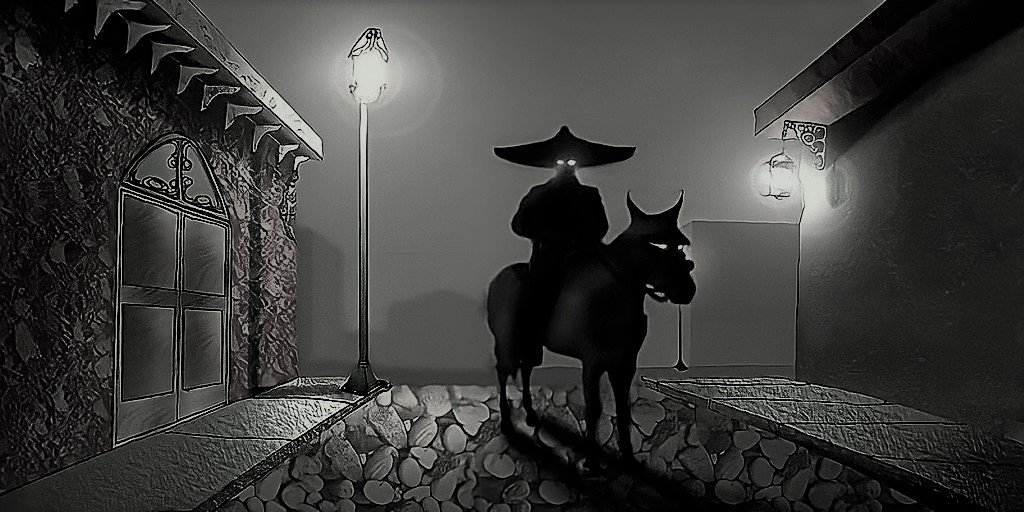The Nalusa Falaya of Native American Choctaw Mythology
According to Choctaw mythology, the Nalusa Falaya which translates to “long black being” is a type of shadow creature that lives in the densest parts of the forest, waiting for victims to infect.
The Legend of the Nalusa Falaya
The Choctaw (Chahta) are a Native American people in the South East of the United States. While today there are tribes in Oklahoma, Mississippi, and Indiana, their ancestry dating back to 1500 BCE shows evidence of the Choctaw inhabiting most of the South East.
With their culture and ancestry going back several millennia, it’s not surprising they have extensive mythology. One creature, or spirit, called the Nalusa Falaya shares many similarities to what is commonly referred to as shadow people and is one of the most terrifying.
The most common legend associated with the Nalusa Falaya is that of two young boys who constantly refused to help the tribe with daily chores and tasks. Their father was understanding of their rebellious nature and allowed them to skirt their responsibilities as long as they followed one simple rule: do not go into the forbidden forest.
The two boys agreed but one night their curiosity got the better of them. As the family went to bed, the boys snuck out and entered the forest. Surrounded by trees, they could hear the whisper of the wind gently rustling the leaves and the echoes of distant croaking frogs.
Their path was lit by the bit of moon that could get past the giant trees around them. After several minutes, the boys spotted a pond but before they could approach, they spotted something standing just beyond the water. The large shadowy figure was eight feet tall and appeared to have no face. It was then the boys realized the sounds around them had stopped, the forest was quiet.
The boys looked at each other and when they looked back the figure was gone. Instead of going back home, the boys continued toward the pond. Upon reaching it, they noticed a large log, they didn’t remember seeing before. The log moved towards the boys and stood in front of them revealing itself to be the shadow figure they saw before.
The boys were frozen in fear and could do nothing as the figure reached out with its long claws and gently caressed one of the boy's cheeks. It took a step forward and the boys could finally move, they ran as fast as they could out toward the exit of the forest. Despite their running, every time they looked at a tree, the figure was there watching them.
The boys reached the exit but just as they thought they were safe, the long shadow-like arm of the figure reached out of the forest and grabbed the youngest boy’s leg, dragging him back in. He screamed out for help but his brother was too slow to grab him. As the boy was pulled back into the forest, his screams suddenly ended.
The remaining child ran back home and alerted his father of what had happened. The elders of the tribe searched for the boy on the outskirts of the forest and find no sign of him. The father knew his youngest boy was lost and told his son that Nalusa Falaya had him now.
Other Versions of the Nalusa Falaya
After reading the version of the Nalusa legend above it’s not hard to see how, like in most cultures, the belief of this creature was used to teach lessons. So it’s not surprising that other versions exist, even ones that dramatically change the abilities or the wants of the Nalusa.
In 1910 anthropologist David Bushnell Jr. met with Pisatuntema, an elder and daughter of the chief of the Choctaw in Louisiana. The conversation focused on the mythology of the tribe including the story of the Nalusa Falaya which was later published in the American Anthropologist.
In this version the Nalusa is no longer an 8-foot-tall being, it appears as the average height of a man, has a shriveled face, long pointed ears, and lives in the densest parts of the forest awaiting hunters who get lost. As the sun starts to set and the shadows of the trees get long, the Nalusa emerges from these shadows to stalk its prey.
When it spots a lost hunter it will slither behind it and call out to him using a male voice. When the hunter turns around, the fear of seeing the Nalusa Falaya causes him to faint. The Nalusa then sticks a small thorn into his hand or foot which curses him into committing evil acts onto others.
The hunter later wakes up unaware he has been cursed and exits the forest as a man now capable of being evil.
Just from these two versions, it’s very easy to see how other versions of the same Nalusa Falaya may exist depending on who is telling the story. Just like all mythology, the stories, especially those told orally, change based on what around them may need explaining. Due to this, there are possibly dozens of variations of this legend, and finding the origin of it, would be impossible.
The only constant for all these legends is that the Nalusa is a shadowy being, that emerges from shadows, and lives in the forest. It’s often tall with long fingernails and sometimes completely black like a shadow while other times a small shriveled face can be made out.
Learn a Little Bit of Everything!
Myths, Mysteries, & Monsters















